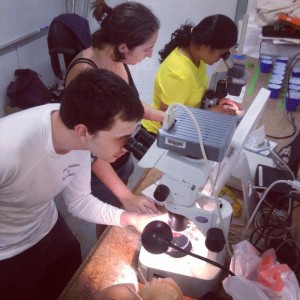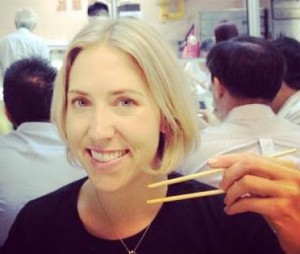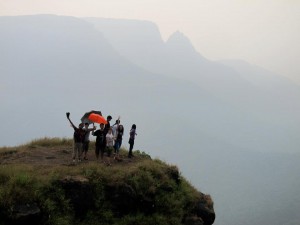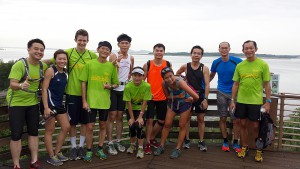
Christopher Knight, 2013-2014, Chile (in red shirt, far left), collecting organisms along the rocky shoreline with Manon Sanguinet of France, Rodrigo Uribe Vásquez of Chile, and Dr. Simon Morley of the British Antarctic Survey
Overlooking the sea, I was wandering the dirt roads in the sleepy village of Las Cruces. It was my first week in Chile and I was trying to find the local bodega. I mustered the courage to speak Spanish with a man working in his garden.
-Hola, can you please tell me how to get to Malloco?
-Hi! Sure, it’s really close. How about I just drive you there?
During the short ride, we introduced ourselves. Incidentally, he had a son that recently moved to the United States and he was eager to visit. At the end of the ride, I thanked him and could not help but grin at his hospitality. Little did I know, such kind interactions would become a routine occurrence at my new home.
As a Fulbrighter, I was conducting marine biological research at the Estación Costera de Investigaciones Marinas (ECIM). Along with my advisor, Dr. Sergio Navarrete, and his PhD student, Joan Escobar, I explored how interactions between organisms such as sea stars, crabs, and mussels affect the community structure of the rocky intertidal zone. A typical day might involve collecting organisms for a lab experiment, dodging powerful waves while collecting field data, and on calmer days, ending with a celebratory plunge into the frigid Pacific Ocean.




